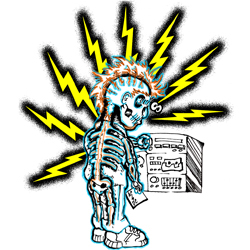
Once we understand how grounding systems and interfaces actually work and how noises couple into signals, finding and fixing problems becomes simple and logical.Perhaps the most important aspect of troubleshooting is how you think about the problem.
Without a methodical approach, chasing noise problems can be both frustrating and time-consuming. For example, don’t fall into the trap of thinking something can’t be the problem just because you’ve always done it that way. Remember, things that “can’t go wrong” do!
Troubleshooting Advice
Don’t start by changing things! Because many problems reveal themselves if we just gather enough clues, gather as much information as possible before you change anything.
Ask questions! Did it ever work right? What symptoms tell you it’s not working right? When did it start working badly or stop working? What other symptoms showed up just before, just after, or at the same time?
Be alert to clues from the equipment itself! Operation of the equipment’s controls, along with some simple logic, can provide very valuable clues.
For example, if the noise is unaffected by the setting of a volume control or selector, logic dictates that it must be entering the signal path after that control.
If the noise can be eliminated by turning the volume down or selecting another input, it must be entering the signal path before that control.
Write everything down! Less than perfect memory can waste a lot of time.
Sketch a block diagram of the system! Show all signal interconnecting cables, including digital and RF, and indicate their approximate length. Mark any balanced inputs or outputs. Generally, stereo pairs can be indicated with a single line. Also note any equipment that’s grounded via its 3-prong power plug, and note any other ground connections such as cable TV or DSS dishes.
Work through the system backwards! As a general rule, and unless clues suggest another starting point, always begin at the inputs to the power amplifiers and sequentially test interfaces backward toward the signal sources.
Additional installments by Bill Whitlock are available here.
Bill Whitlock has served as president of Jensen Transformers for more than 20 years and is recognized as one of the foremost technical writers in professional audio.
